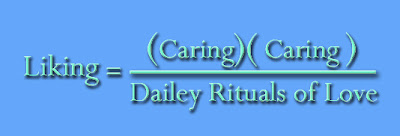 The mathematical poem today is a similar triangles poem inspired by the text below which appeared in the delancyplace blog Tuesday, August 21, 2007
The mathematical poem today is a similar triangles poem inspired by the text below which appeared in the delancyplace blog Tuesday, August 21, 2007
Delanceyplace.com 08/21/07-The Guillotine
In today's excerpt--Dr. Guillotin's invention, the guillotine, which debuted in Paris in 1792 and was still being used for capital punishment in the 1950s. Guillotin's motive was to introduce a more humanitarian form of capital punishment, and his success in that was evident from the very first use of the guillotine when "the crowds, accustomed to bloody bouts with the ax and sword, thundered in disappointment, 'Bring back the block!' " Yet almost immediately, guillotine executions became Paris's favorite form of entertainment, with families bringing picnic lunches and reveling in the carnival atmosphere that surrounded them. During the French Revolution, with a virtual civil war raging in the provinces, "at least half a million people were slaughtered on local guillotines or in battles between opposing forces." Here is a description of France's last public guillotine execution, which occurred in Versailles in 1939 when convicted murderer Eugene Weidmann, a German, was decapitated:
"Weidmann's execution was slated for June 17, and throngs had been pouring in from Paris and elsewhere for days, lending a holiday mood to the town. Permitted to stay open all night, bistros overflowed with customers as elated by the event as fans on the eve of a football match. The guillotine, which had normally done its deed inside the jail, was moved to the street outside, and proprietors of apartments above were cashing in by renting seats in their windows. From his cell Weidmann could hear loudspeakers blaring jazz interspersed with commentaries on his impending demise. ...
"Despite his years of experience, Desfourneaux [the executioner] was slow and jittery. Only after three tries did he manage to squeeze Weidmann's neck into the lunette, and he also fumbled with the lever. The operation lasted twelve seconds--twice the normal time. The crowd, which had been waiting in hushed anticipation, stormed the police barrier as the blade fell. Men shouted anti-German epithets; elegant ladies, avid for souvenirs, rushed to dip their handkerchiefs in the blood; and, for the rest of the day and far into the night, revelers chanted songs and swilled wine. ...
"Perched on rooftops, photographers recorded the tumult, and their pictures quickly appeared in newspapers around the world and became a staple of postcards. The fiasco shocked even the most intransigent proponents of capital punishment, and also cast doubt on the doctrine that public executions deterred crime. Fearing that future outbursts would damage France's image abroad, Premier Edouard Daladier decreed that guillotinings were henceforth to be conducted within prison enclosures."
Stanley Karnow, Paris in the Fifties, Three Rivers Press, Copyright 1997 by Stanley Karnow, pp. 161-162.
 I am grateful and honored that the American Mathematical Society has accepted “DOG DREAM” (above) and “TEMPTATION” (below) to the 2008 art exhibition, which is concurrent with the 2008 AMS conference which takes place in January of 2008.
I am grateful and honored that the American Mathematical Society has accepted “DOG DREAM” (above) and “TEMPTATION” (below) to the 2008 art exhibition, which is concurrent with the 2008 AMS conference which takes place in January of 2008.








































